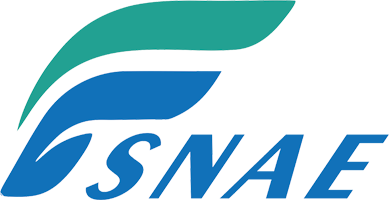What is FSN
Fu’s Subcutaneous Needling (FSN) is a modern acupuncture technique which was invented in China by Dr Zhong-hua Fu, in 1996. This technique uses a modified acupuncture needle, an FSN Trocar Acupuncture Needle to stimulate subcutaneous areas where there are nearby trigger points or tightened muscles (TMs). The technique is used to treat muscular-skeletal problems as well as many other medical conditions, for instance avascular necrosis (AVN), macular degeneration (AMD), and many others. In particular, FSN is renowned for its almost instantaneous pain reduction. Patients quite often describe the FSN as "magic needle" with unbelievable effects.
How does FSN work

FSN uses a pre-sterilized, disposable, solid stainless-steel needle embedded partially within a casing tube (cannula). The needle is accurately delivered into the subcutaneous layer by an applicator device. Once the needle is in the subcutaneous layer, the tip of needle is withdrawn into the casing tube, and then the needle is carefully swiped from side to side.
The continuous movement of the needle combined with manipulation of the tightened muscles will lead to a relaxation of the tightened muscles and the original complaint, such as pain, will be reduced or will have disappeared.
Let’s take heel pain as an example, in conventional medical terms heel pain is described as "Plantar fasciitis", which means an inflammation of the connective tissue which support the arch of the foot. In conventional medicine you will be prescribed an anti-inflammatory medication (NSAIDs) or given a steroid injection into the painful area. With FSN, we will check for muscle tension around the calf or leg. Very often we will find tightened muscles around the Gastrocnemius or Soleus muscles. Then, an FSN needle is inserted between skin and muscles, i.e. into the subcutaneous level, of the calf or above the ankle to target the tightened muscle, which is followed by manipulations of the tightened muscles conducted by both the practitioner and by the patient. After few minutes of treatment the pain may be tested by pressing or walking on the foot for a few steps. You should find that the degree of pain has reduced.
Why stimulate the subcutaneous layer
- Less pain - Subcutaneous (meaning 'beneath the skin') tissue is the innermost layer of skin lying next to muscles. It contains fewer nerve endings which primarily act as pain receptors, in comparison to the more superficial layers of the skin, the epidermis and dermis. This the reason why needling in this layer is less likely to cause pain.
- Instant effect - Subcutaneous tissue is made up of fat and connective tissues which are associated with the muscles underneath. Tightened muscles are often the source of pain. The FSN technique is to relax the area where there are tightened muscles, or small areas of acute pain called trigger points. In the treatment of pain symptoms, especially acute pain, FSN can almost instantly relieve the pain after inserting the needle or upon finishing the manipulation.
What are the difference between TA and FSN

- Traditional Acupuncture (TA) uses fine needles inserted at specific points on energy meridians in the body for therapeutic or preventative purposes. TA involves inserting needles deep enough to penetrate the skin, sometimes through the subcutaneous region and into muscular tissues and then stimulating the points. Patients will experience different feelings such as heaviness, tingling, or a mild soreness which Chinese medicine calls De Qi. Once the needles are put in, patients will remain still for around 30mins for the effect.
- Although FSN originates from within Traditional Chinese Acupuncture, it is closer to and has adapted to biomedical science. FSN practitioners are likely to use human anatomy and modern physiology and pathology to diagnose and explain clinical conditions. Instead of having the patient stay still during treatment, FSN therapy requires movements of the tightened muscles which are performed simultaneously with needle manipulation, which can produce an incredible pain-relieving effect instantly.
Is FSN safe?
Absolutely safe!
FSN is much safer than traditional acupuncture and other new needling techniques, for the simple reason that it does not reach the muscles or penetrate into the deep fascia layers. It uses a very shallow needling technique which stops at the subcutaneous layers.
FSN treats the affected area or organ by stimulating a nearby unaffected area, thus making it undoubtedly not only safer than traditional acupuncture but also much less painful since the needling does not directly touch the sensitive area.
However, one should also remember that FSN, like all needling techniques, may sometimes cause some temporary minor adverse effects, such as a few of drops of blood where the needle perforates the skin or, in rare occurrences, a short bout of dizziness.
Does FSN cause more pain?

No!
In fact, unlike traditional acupuncture which uses10-30 needles for a single person, FSN therapy uses just one or two needles. The FSN needle is only inserted shallowly into the subcutaneous area just under the skin. Patients feel more relaxed as they may move around, change position or lie down in any comfortable position. It has also been found that children frequently prefer FSN needles to traditional needles when they are asked to choose.
FSN Trocar Acupuncture
The FSN needle is a modified trocar needle and has been patented in China. There are three parts to the needle: a soft casting tube or cannulae; a solid needle; and a protective sheath. The solid needle is 31 mm in length and 1 mm in diameter. Each needle is individually packaged and sterilized with ethylene oxide gas.
This trocar acupuncture needle has been under patent in China since 1999. It has also passed CE Marking requirement (Shanghai International Holding Corp GmbH Eiffestrase 80. D-20537, Hamburg, Germany)



